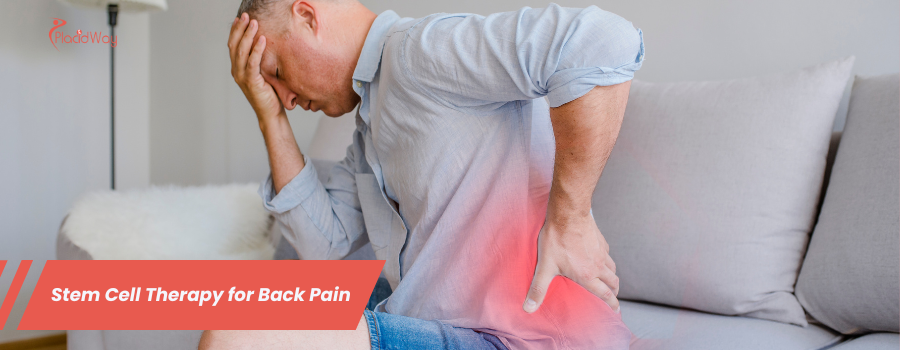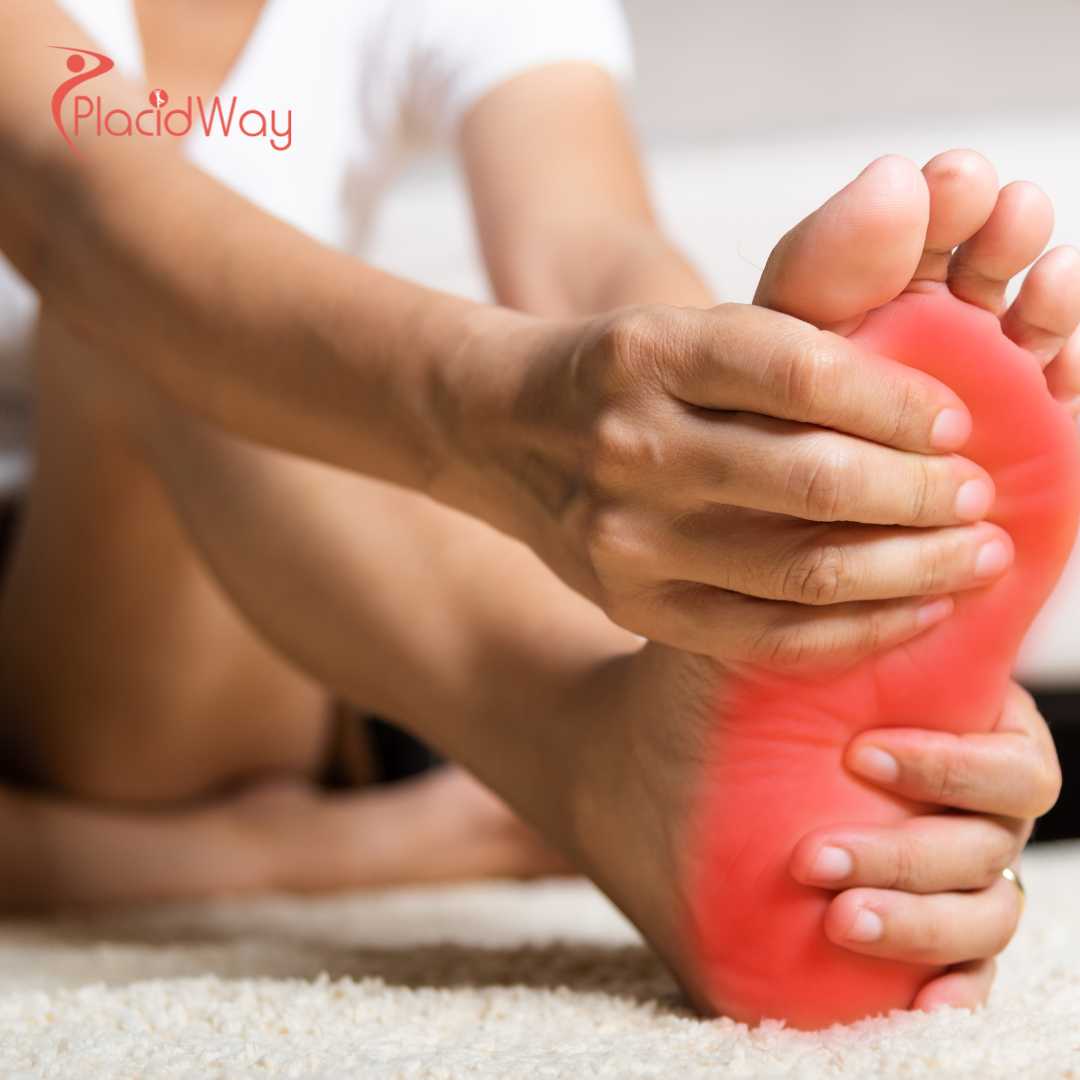
Finally Find Relief - The Truth About Stem Cell Therapy for Back Pain
If you live with chronic back pain, you know how exhausting it is. Every day can feel like a battle against your own body. Simple things like playing with your kids, focusing at work, or even getting a good night's sleep can seem impossible. You’ve likely tried everything: physical therapy, pain medications, injections, and maybe you're even facing the prospect of spinal fusion surgery.
But what if there was another way? What if you could use your body's own natural healing power to fix the source of the pain? This is the promise of stem cell therapy. It’s a cutting-edge field of regenerative medicine that is offering new hope to people who thought their only option was surgery or a lifetime of pain management.
This guide will answer your biggest questions about stem cell therapy for back pain. We'll explore what it is, how it works, and—most importantly—how medical tourism is making this advanced treatment accessible and affordable for people just like you. You don't have to just live with the pain. A better, more active life could be closer than you think.
What Exactly Is Stem Cell Therapy and How Does It Work for Back Pain?
Think of stem cells as your body's "blank slate" construction workers. They are special cells that haven't decided what they want to be yet. When they are placed in a specific environment, like a damaged spinal disc, they have the unique ability to:
- Reduce inflammation: This is often the primary source of your pain.
- Send signals to other cells: They act like a foreman, calling in other healing cells to the injured site.
- Transform (differentiate): They can potentially turn into new cartilage or disc cells, repairing the damage at its source.
The procedure is surprisingly straightforward. A doctor harvests the stem cells (either from you or from a donor source), concentrates them in a lab, and then injects them directly into the problem area of your spine, often using ultrasound or fluoroscopy for precise guidance. It’s a minimally invasive, outpatient procedure, meaning you'll likely go home the same day.
What Are the Different Types of Stem Cells Used?
When you hear "stem cells," it's important to know we are not talking about controversial embryonic stem cells. The cells used in regenerative medicine are adult stem cells, which are safe and ethical. The main types you'll encounter are:
- Bone Marrow Aspirate Concentrate (BMAC): These stem cells are harvested from your own hip bone. This is a very common source and contains a powerful mix of stem cells and growth factors.
- Adipose-Derived Stem Cells: These cells are taken from your own fat tissue (a mini-liposuction procedure). Fat is a very rich source of stem cells, often containing hundreds of times more than bone marrow.
- Allogeneic Umbilical Cord Tissue: These cells are collected from the umbilical cord of a healthy, screened baby after a normal birth. This is a non-controversial and incredibly potent source of young, vibrant stem cells. A major benefit is that it doesn't require a harvesting procedure on your own body.
The type of stem cell your doctor recommends will depend on your specific condition, your age, and the clinic's protocols. All three types have been used successfully to treat back pain.
Am I a Good Candidate for This Therapy?
Stem cell therapy isn't a cure-all, but it can be life-changing for the right person. You may be a good candidate if:
- Your pain is caused by a diagnosed condition like degenerative disc disease, disc bulges, herniated discs, or facet joint syndrome.
- You have tried conservative treatments (physical therapy, chiropractic care, steroid injections) for at least 6 months without significant, lasting relief.
- You are trying to avoid spinal fusion surgery.
- You are in generally good health and do not have active cancer, a blood-borne illness, or a current infection.
The only way to know for sure is to get a full evaluation. A specialist will review your MRIs and medical history to determine if your condition is one that can be helped by regenerative medicine.
What is the Stem Cell Procedure Actually Like?
The process is much less intimidating than most people think. Here’s a typical step-by-step breakdown:
- Consultation: First, you'll have a detailed consultation and review of your medical images (MRI, X-ray) to confirm you're a candidate.
- Harvesting (if using your own cells): If you're using autologous cells, the doctor will numb an area (like the back of your hip or your abdomen) and harvest a small amount of bone marrow or fat. This is usually described as feeling some pressure, but not sharp pain.
- Processing: The harvested sample (or the donor tissue) is taken to an on-site lab and spun in a special machine called a centrifuge. This separates and concentrates the powerful stem cells into a small, injectable volume. This takes about 20-30 minutes.
- Injection: The doctor will numb the area of your back being treated. Using a live X-ray (fluoroscopy) or ultrasound, they will guide a needle to the exact spot—the damaged disc or joint—and inject the stem cell concentrate.
- Recovery: You'll rest for a short period (around 30-60 minutes) and then you are free to go home. You won't need a general anesthetic and can walk out on your own.
What is the Recovery and When Will I Feel Better?
This is a key difference from surgery. There is no long, painful hospital stay or months of heavy restrictions.
- First Few Days: You'll be advised to take it easy. You might feel some soreness at the injection site or in your back. This is normal and is actually a sign the healing process is beginning.
- First Few Weeks: You'll be encouraged to walk and do light activities but avoid strenuous exercise, heavy lifting, or high-impact movements.
- 2-3 Months: This is when many patients begin to notice a real, significant reduction in their pain levels and improvement in their mobility. The stem cells are hard at work repairing tissue.
- 6-12 Months: The healing process continues, with many patients reporting ongoing improvements for up to a year after the procedure.
Patience is key. Unlike a steroid shot that just masks pain, this is a healing process. The goal isn't just temporary relief; it's long-term repair.
Why is Stem Cell Therapy So Expensive in Places Like the US?
This is a major source of frustration for patients. In the United States, the Food and Drug Administration (FDA) has very strict regulations. In many cases, if a clinic expands your stem cells (grows more of them in a lab) or uses allogeneic (donor) cells, the treatment is classified as an experimental drug. This makes it incredibly expensive and difficult to offer.
Even simple, same-day procedures using your own cells are not covered by insurance, as they are still considered "investigational." This leaves patients to bear the full, high cost, which is inflated by high administrative overhead, malpractice insurance, and general healthcare costs in the US.
How Can Medical Tourism Make This Treatment Affordable?
Medical tourism is the solution for many patients. Reputable international clinics in countries like Mexico, Colombia, or Thailand can offer the exact same (and sometimes more advanced) treatments for a fraction of the price. This isn't because the quality is lower; it's because:
- Lower Operational Costs: The cost of medical staff, facilities, and insurance is much lower abroad.
- Favorable Regulations: Many countries have government-approved regulatory bodies (like COFEPRIS in Mexico) that support regenerative medicine. This allows them to offer advanced treatments, like cultured (expanded) stem cells, that are not widely available in the US.
- All-Inclusive Packages: Many international clinics cater to medical tourists, offering packages that include treatment, accommodation, and airport transfers, simplifying the entire process.
What is the Cost of Stem Cell Therapy for Back Pain Worldwide?
The cost difference is staggering and is the primary reason patients travel for care. Here is a general comparison of approximate costs for stem cell therapy for back pain. Please note these are estimates and can vary based on the specifics of your condition and treatment.
| Country | Approximate Cost Range (USD) |
|---|---|
| United States | $20,000 – $50,000+ |
| Mexico | $3,500 – $15,000 |
| Colombia | $5,500 – $14,000 |
| Turkey | $2,000 – $15,000 |
| Thailand | $3,000 – $13,000 |
As you can see, you could fly to another country, receive high-quality treatment, enjoy a recovery period in a beautiful location, and fly home, all for less than half the price of the procedure alone in the US.
Is It Safe to Get Stem Cell Therapy in Another Country?
This is the most important question for any medical tourist. While there are "scam" clinics everywhere (including the US), the top-tier international hospitals are often state-of-the-art facilities with JCI (Joint Commission International) accreditation, the same body that accredits top US hospitals.
A safe, reputable clinic will:
- Be fully licensed by its country's health ministry (e.g., COFEPRIS in Mexico).
- Have board-certified doctors and orthopedic specialists on staff.
- Be completely transparent about the source of their stem cells.
- Use high-tech guidance (like ultrasound or fluoroscopy) for all spinal injections.
- Have countless verifiable patient testimonials.
Working with a trusted medical tourism partner like PlacidWay is the best way to ensure you are connected with a pre-screened, high-quality, and safe facility.
What Key Questions Should I Ask an International Clinic?
Don't be afraid to be a thorough researcher—your health is worth it. Here is a checklist of questions to ask any provider you are considering:
- Doctor's Credentials: Are the doctors who perform the procedure board-certified in orthopedics, pain management, or a related specialty?
- Cell Source: What is the source of the stem cells (bone marrow, fat, or umbilical cord)?
- Cell Count: How many millions of stem cells will be administered in the treatment? (This is a key marker of treatment potency).
- Guidance: Do you use fluoroscopy (live X-ray) or ultrasound to ensure the injection is in the exact right place? (The answer should always be YES for spinal procedures).
- Accreditation: Is your clinic licensed by a government body or international organization?
- Full Cost: What is included in the price? Does it cover the consultation, the procedure, and any follow-up?
What Are the Risks or Side Effects?
Compared to spinal surgery, the risk profile for stem cell therapy is incredibly low. Surgery carries risks of general anesthesia, infection, blood clots, nerve damage, and a long, painful recovery that can fail to fuse or fix the pain.
With stem cell therapy, the primary risks are:
- Infection: This is a risk with any injection, but it is extremely rare in a sterile, clinical setting.
- Soreness: As mentioned, you will likely be sore for a few days. This is not so much a risk as an expected side effect.
- No Improvement: The treatment may not work for everyone. While success rates (70-80% of patients reporting significant improvement) are high, it is not 100% guaranteed.
Importantly, adult mesenchymal stem cells (MSCs) do not cause cancer or form tumors. That is a myth associated with a different cell type (embryonic cells) not used in this treatment.
Why Choose PlacidWay for My Medical Journey?
Planning a medical trip on your own can be overwhelming. How do you know which clinics are safe? How do you handle the travel logistics? This is where we come in. PlacidWay acts as your trusted partner and advocate from start to finish.
- We've Done the Research: We have a global network of accredited hospitals and clinics that we have already vetted for quality, safety, and patient results.
- You Get Options: We provide you with multiple quotes from different top-tier providers, so you can compare and choose the best fit for your budget and needs.
- Seamless Planning: We help coordinate everything from your medical records review and virtual consultations to your travel, accommodation, and appointments.
- No Extra Cost to You: Our service is to help you find the right solution. We provide guidance and facilitate your connection to the clinic that's right for you.
We believe everyone deserves access to high-quality healthcare, and your location or financial situation shouldn't be a barrier to a pain-free life.
Ready to Leave Back Pain Behind?
Your journey to a more active, pain-free life is just a click away. Don't let back pain define you any longer. Explore top-rated international clinics, compare affordable treatment packages, and get a free, personalized quote for your stem cell therapy. PlacidWay is here to help you plan a seamless and healing medical journey. Start your transformation today!
Stem Cell Therapy Abroad










Share this listing